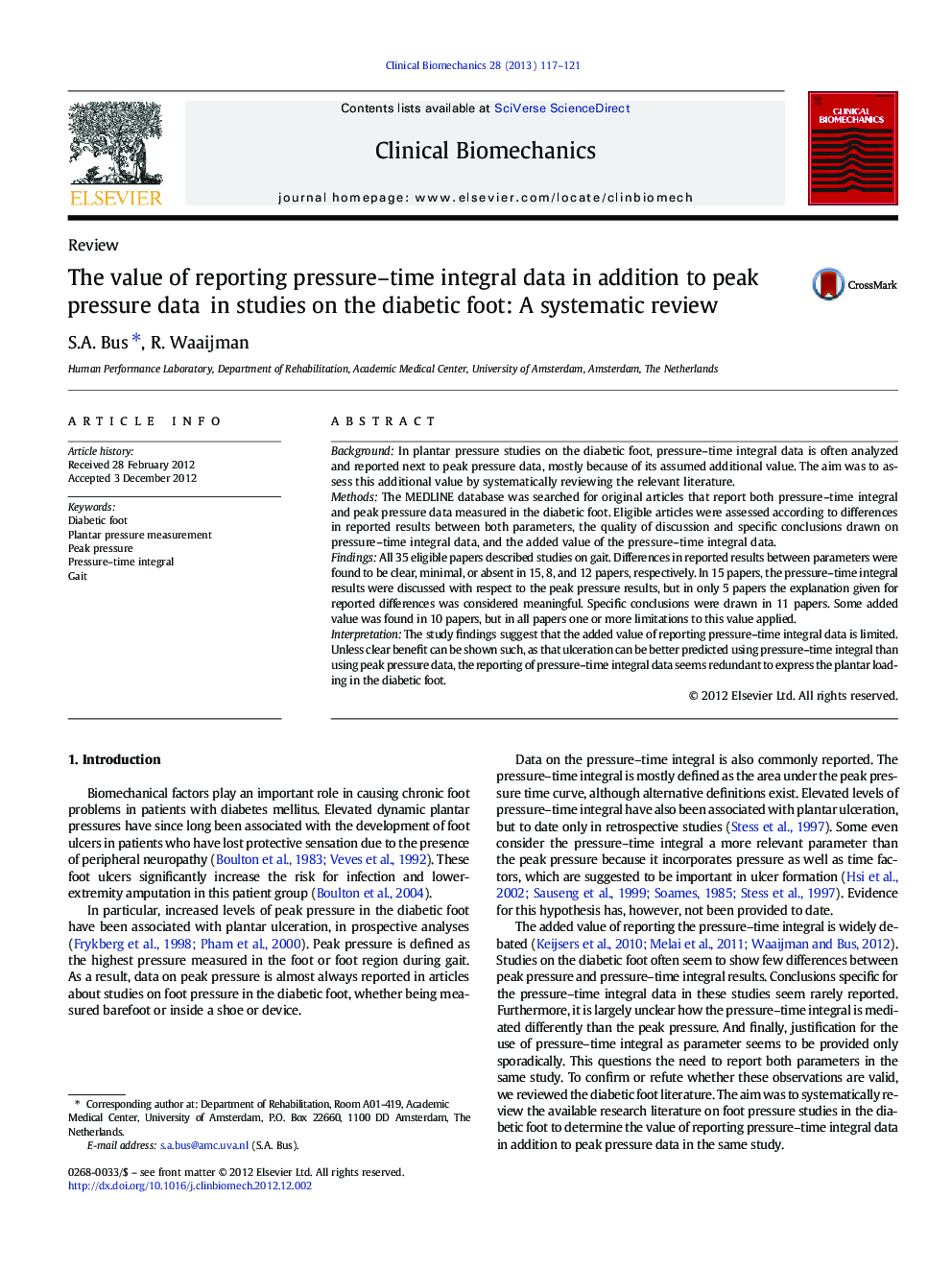| Article ID | Journal | Published Year | Pages | File Type |
|---|---|---|---|---|
| 6205042 | Clinical Biomechanics | 2013 | 5 Pages |
BackgroundIn plantar pressure studies on the diabetic foot, pressure-time integral data is often analyzed and reported next to peak pressure data, mostly because of its assumed additional value. The aim was to assess this additional value by systematically reviewing the relevant literature.MethodsThe MEDLINE database was searched for original articles that report both pressure-time integral and peak pressure data measured in the diabetic foot. Eligible articles were assessed according to differences in reported results between both parameters, the quality of discussion and specific conclusions drawn on pressure-time integral data, and the added value of the pressure-time integral data.FindingsAll 35 eligible papers described studies on gait. Differences in reported results between parameters were found to be clear, minimal, or absent in 15, 8, and 12 papers, respectively. In 15 papers, the pressure-time integral results were discussed with respect to the peak pressure results, but in only 5 papers the explanation given for reported differences was considered meaningful. Specific conclusions were drawn in 11 papers. Some added value was found in 10 papers, but in all papers one or more limitations to this value applied.InterpretationThe study findings suggest that the added value of reporting pressure-time integral data is limited. Unless clear benefit can be shown such, as that ulceration can be better predicted using pressure-time integral than using peak pressure data, the reporting of pressure-time integral data seems redundant to express the plantar loading in the diabetic foot.
